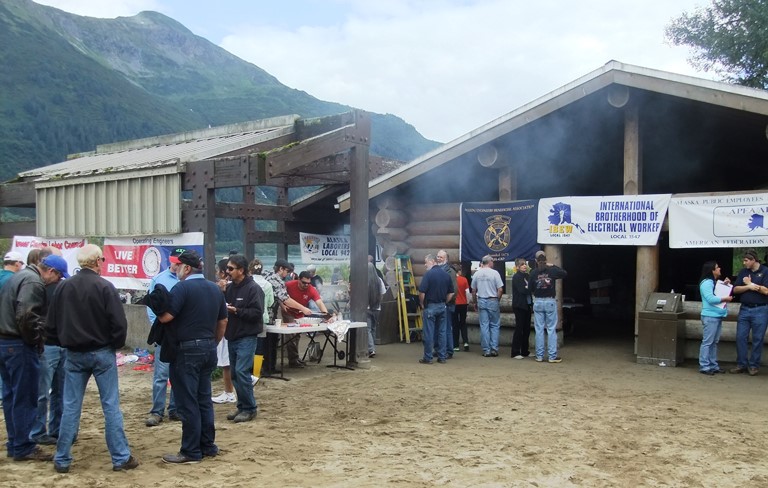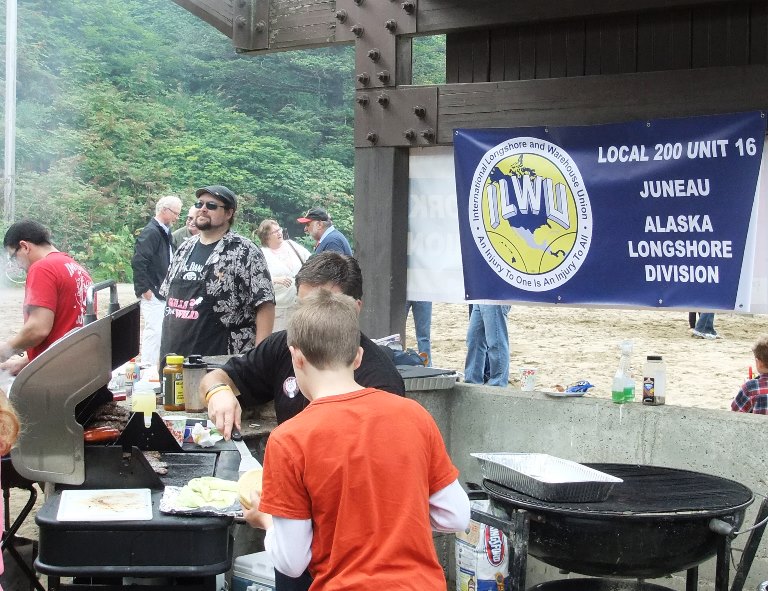
Monday’s Labor Day celebrations in Alaska were a good chance to collect signatures on two initiatives to protect workers.
One is statewide to increase Alaska’s minimum wage. The other asks Anchorage voters to repeal a municipal law that limits the rights of city employees.
Some Alaska union officials are concerned a nationwide decline in wages and benefits is making its way north.
“If we don’t do something about it, then I think Labor Day is kind of relegated to being remembered as nothing more than the last barbeque of summer,” says Vince Beltrami, president of the Alaska AFL-CIO, the state’s largest labor organization.
Beltrami says attacks on organized workers in some Lower 48 states and the “right to work” movement are embodied in the Anchorage ordinance passed in March that eliminates city employee’s right to strike, takes away incentive pay and bonuses in future contracts, and restricts annual pay increases to no more than 1 percent of the Anchorage CPI.
Beltrami is helping collect about 7,100 signatures of qualified voters to put the ordinance on the Anchorage ballot.
“We’ve only had a week to collect signatures and we’re already creeping up on the requisite number,” he says.
Alaska has the second highest union representation in the nation, according to Beltrami. But he and other union officials are concerned it will be a target for those who want to make it a right-to-work state.
A Labor Day message sent out by Juneau, Anchorage and Fairbanks Central Labor Councils indicates high union participation increases Alaska’s median wage for all workers, union and non-union, by nearly $4,000.
The information is gleaned from U.S. census data. It also shows a strong correlation between union participation and education.

Pete Ford, president of the Juneau Central Labor Council, says it suggests that jobs in right-to-work states are often lower income.
“They also tend to be jobs that are not career type jobs and in many instances they’re jobs that tend to get packed up and moved away depending on what political winds might be taking place,” he says.
“Right to work” does not provide a general guarantee of employment. Instead, right-to-work states prohibit negotiated agreements between labor unions and employers that require employees’ membership or union dues.
About half of U.S. states have such laws.
Minimum wage initiative
Alaska unions are also helping push a statewide initiative to increase the minimum wage from $7.75 to $9.75 an hour by 2016. Then the minimum wage would be annually adjusted for inflation.
Three former state Labor Department commissioners have organized the effort. Supporters must collect about 30,000 signatures of qualified Alaska voters to put the initiative on next year’s ballot.
The AFL-CIO’s Beltrami says since 2009 about 70 percent of the jobs created in the U.S. are low wage, mostly in retail and fast food service.
“Meaning that if people work full time they’re still going to be around the poverty level,” Beltrami says.
For a two-person household in Alaska, that’s a little over $19,000 a year, according to the U.S. Department of Health and Social Services.
Alaska is among 19 states and the District of Columbia where minimum wage is greater than the federal floor of $7.25.
The Obama Administration wants the U.S. congress to raise the federal minimum wage to $9 an hour.
